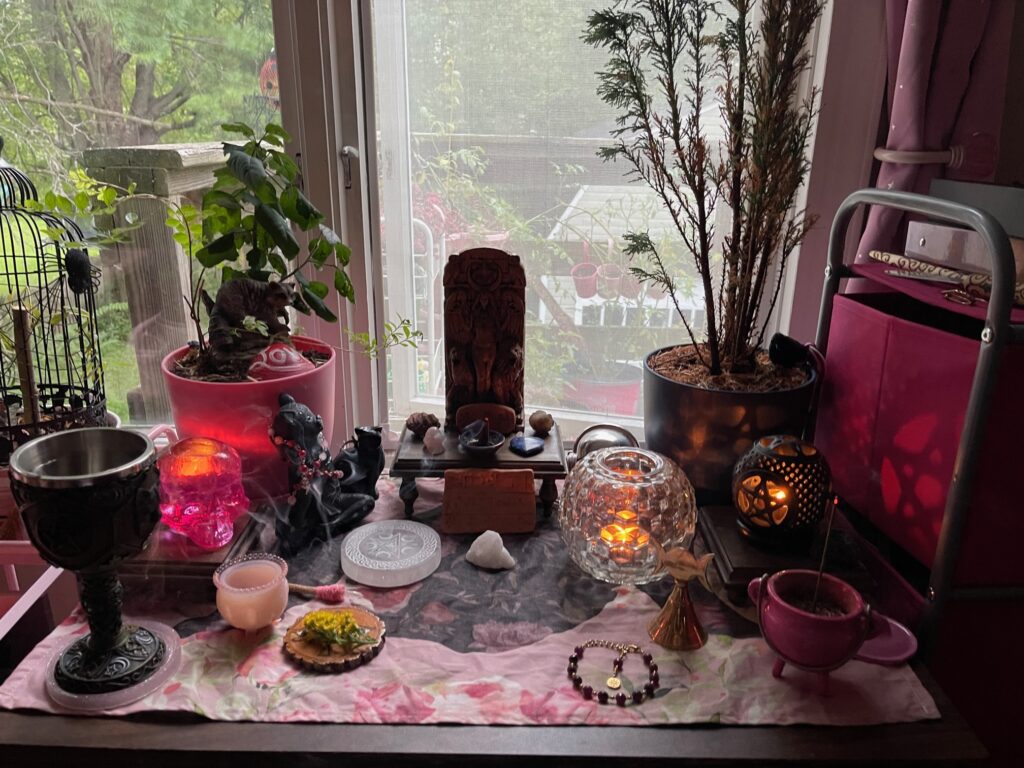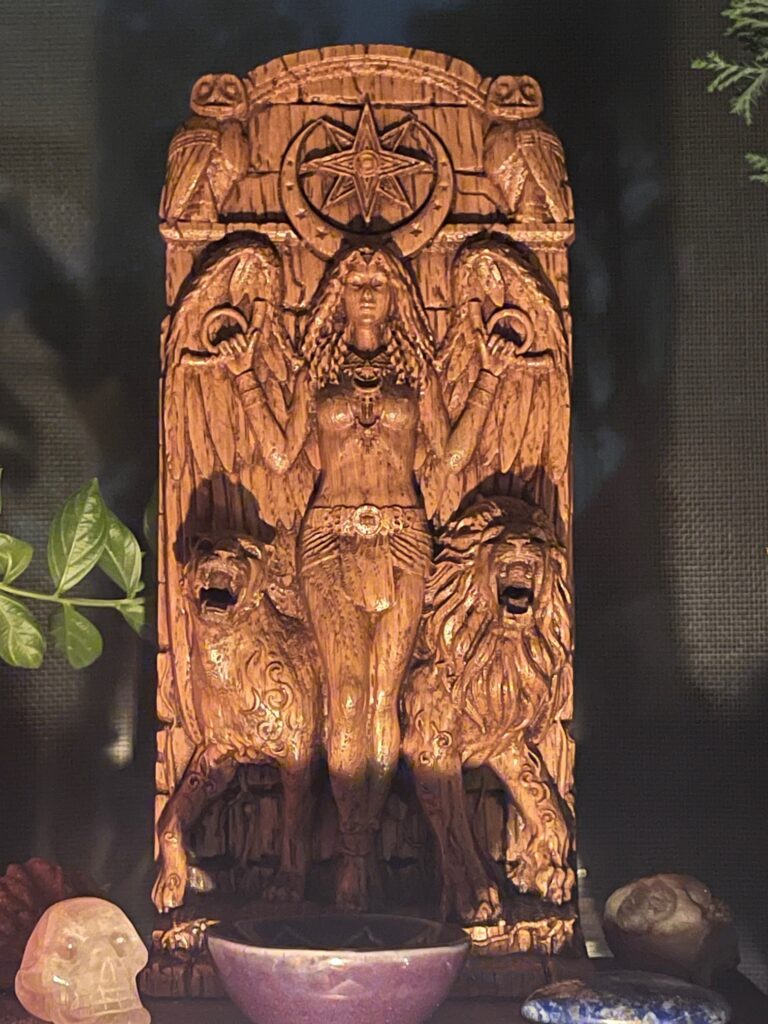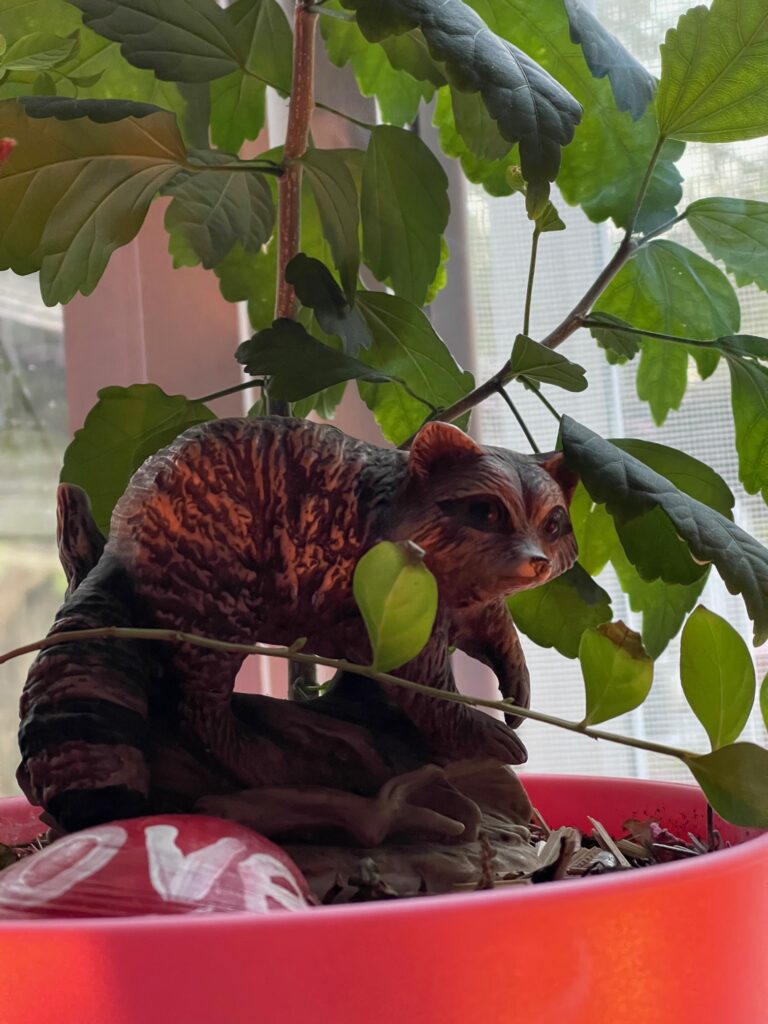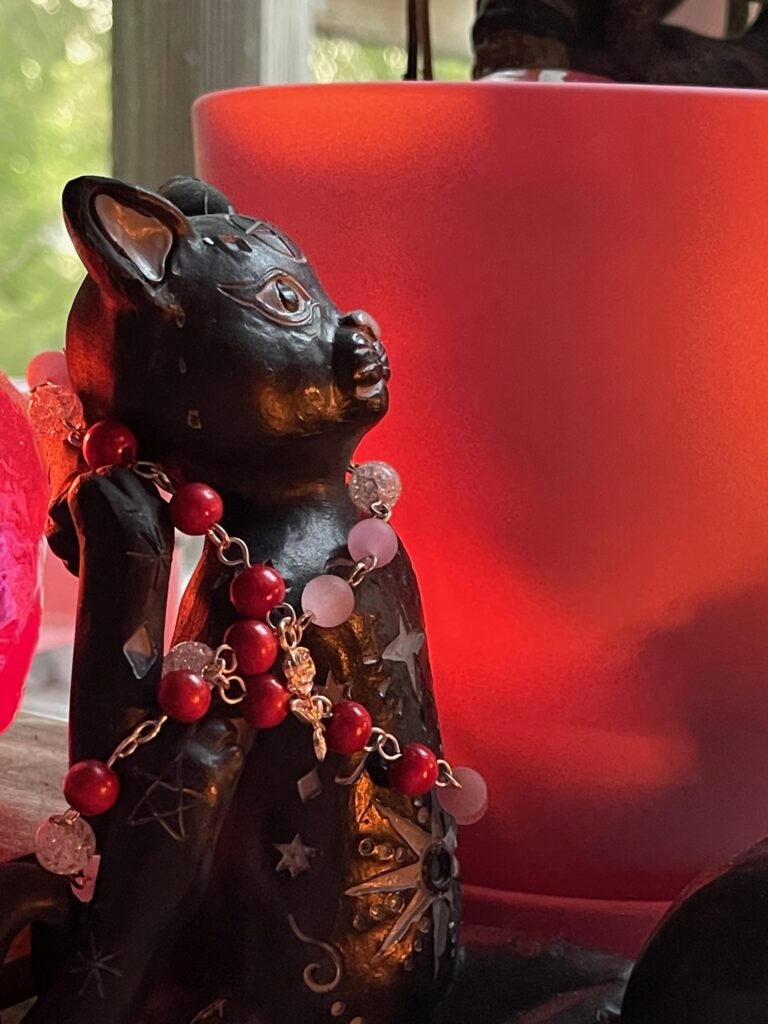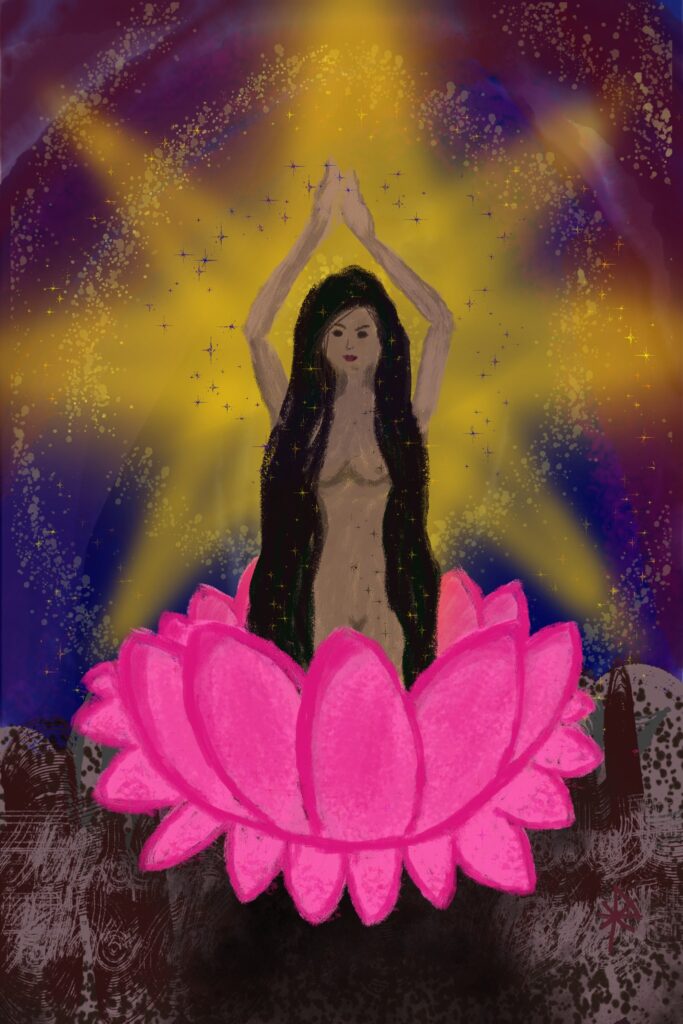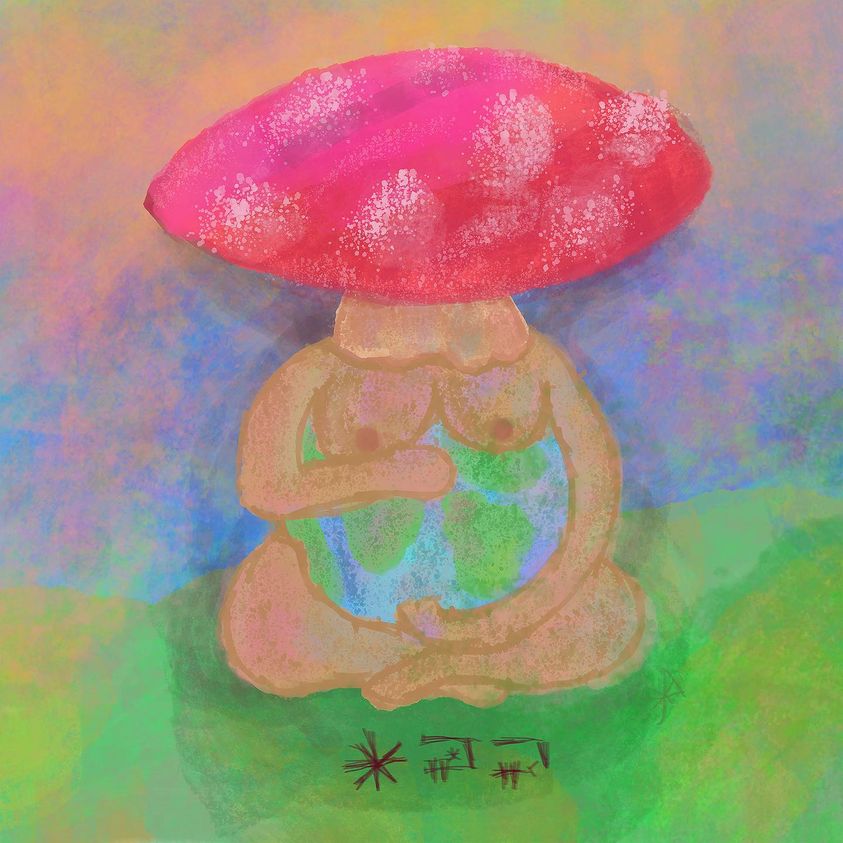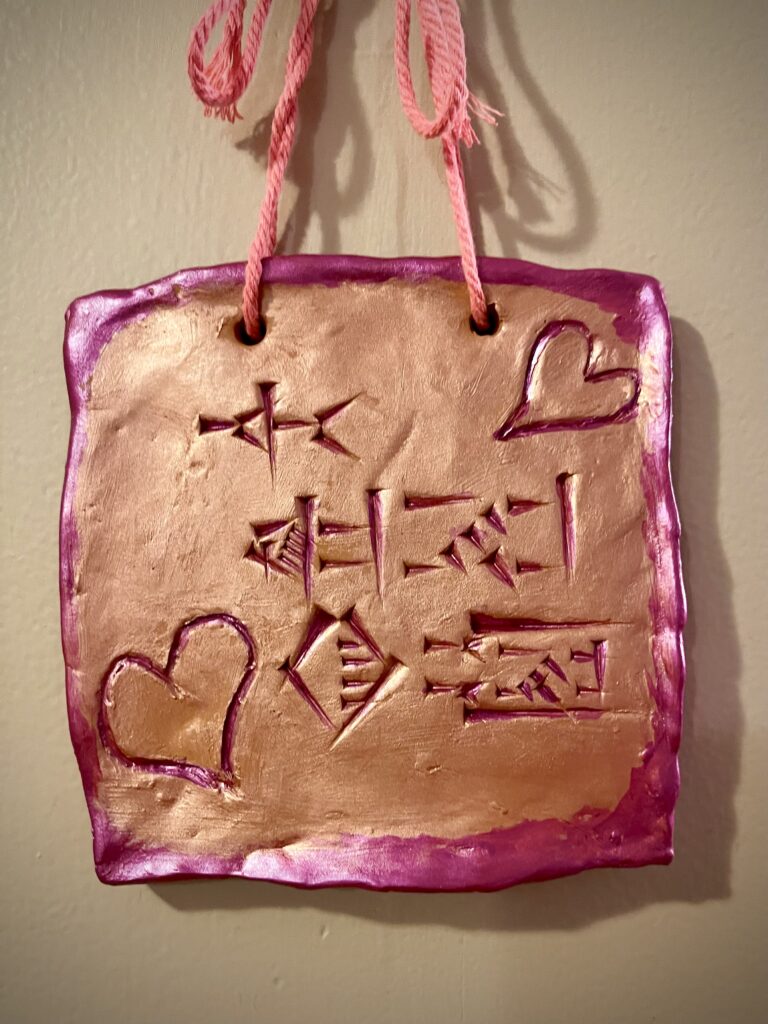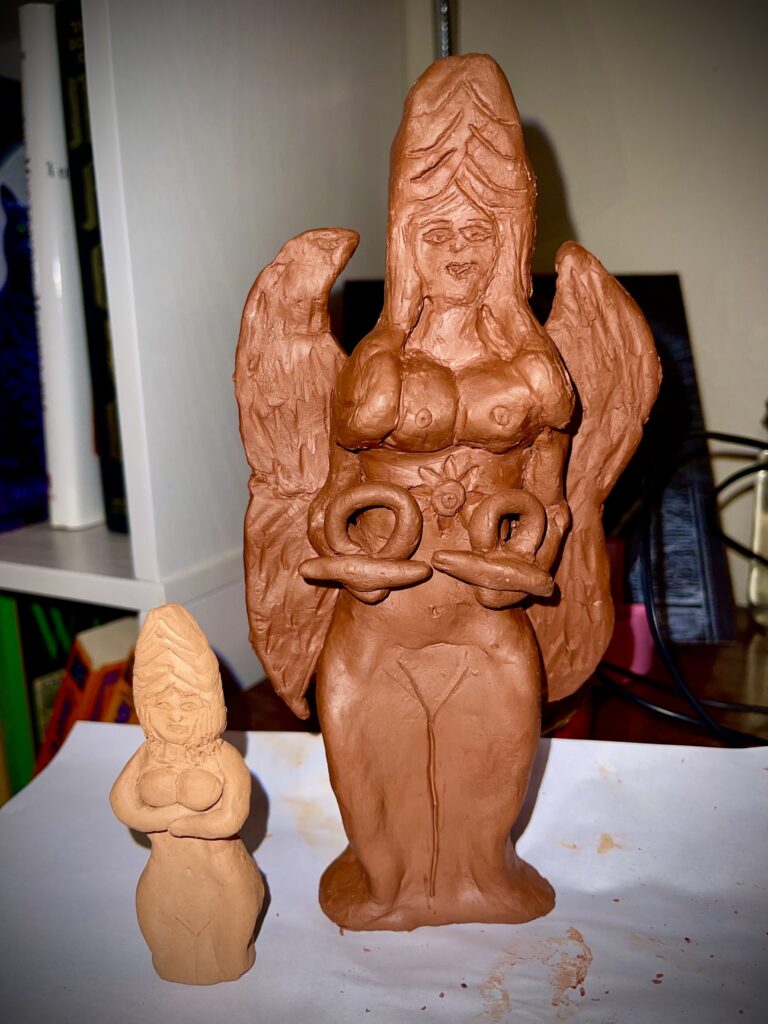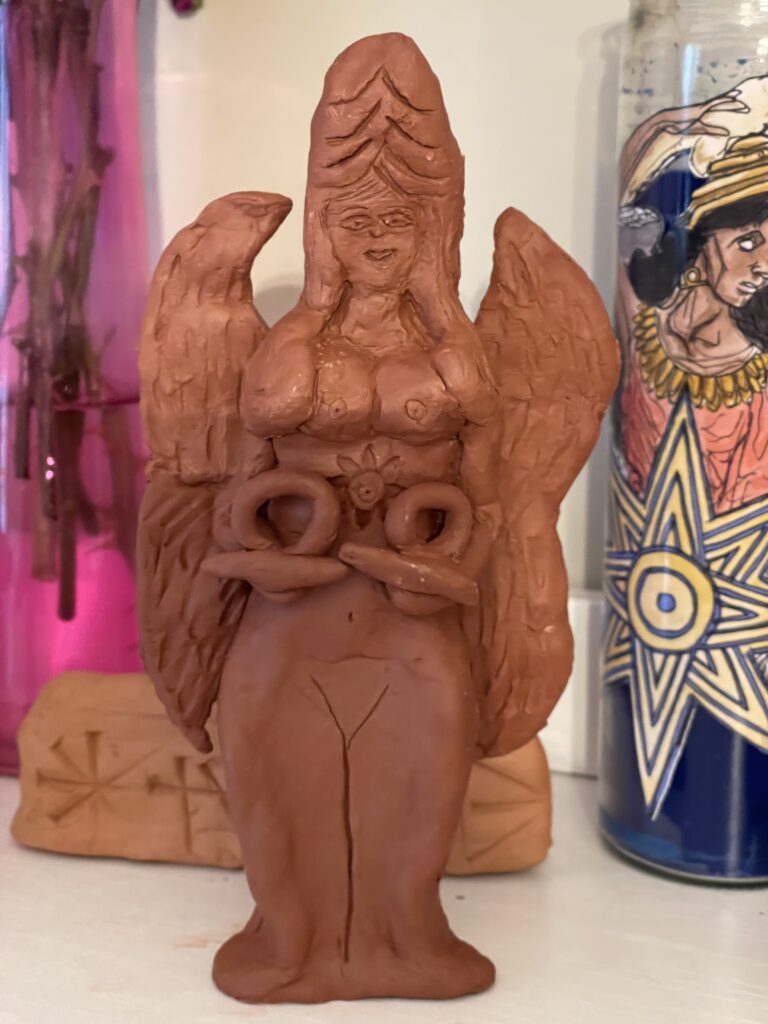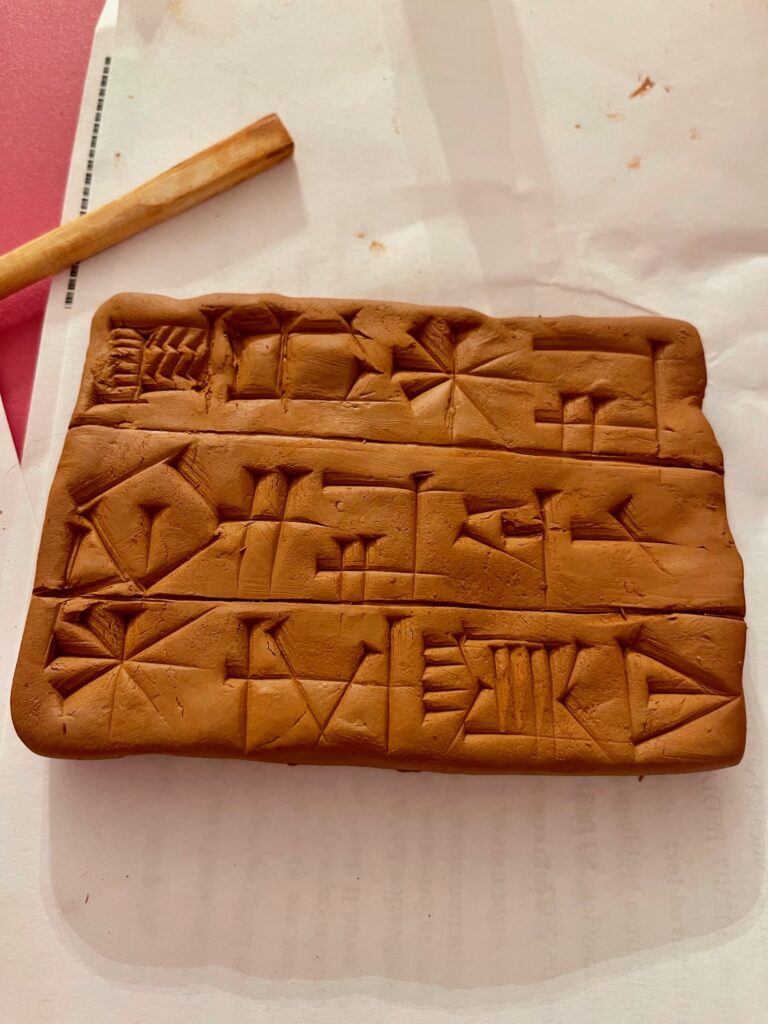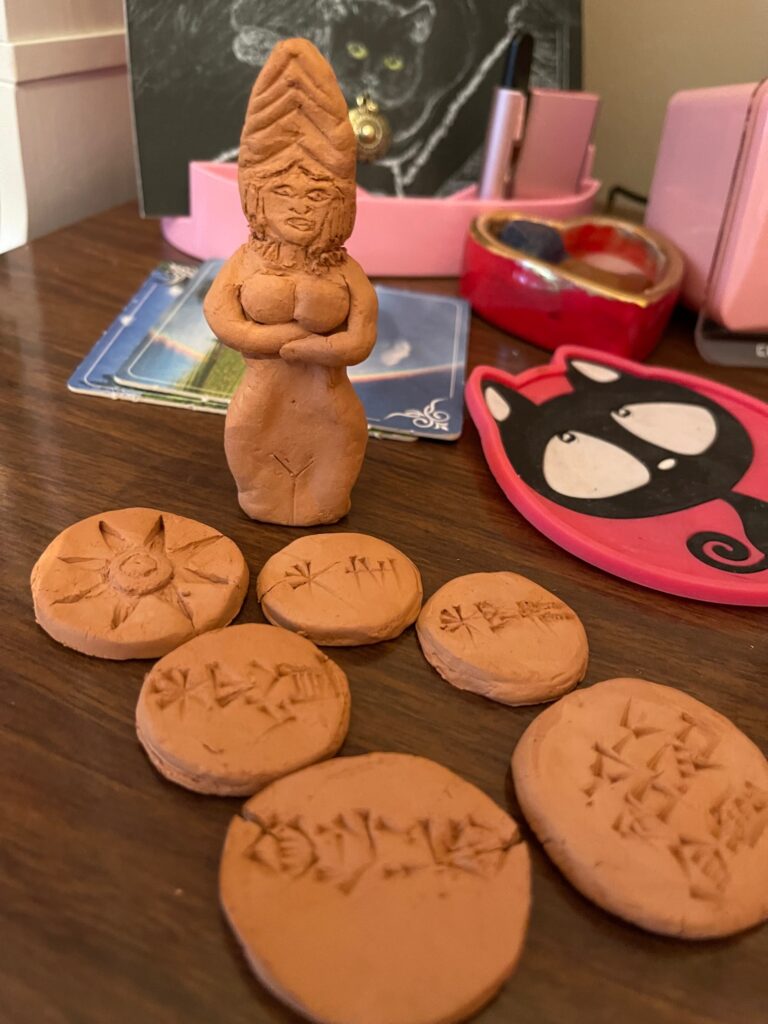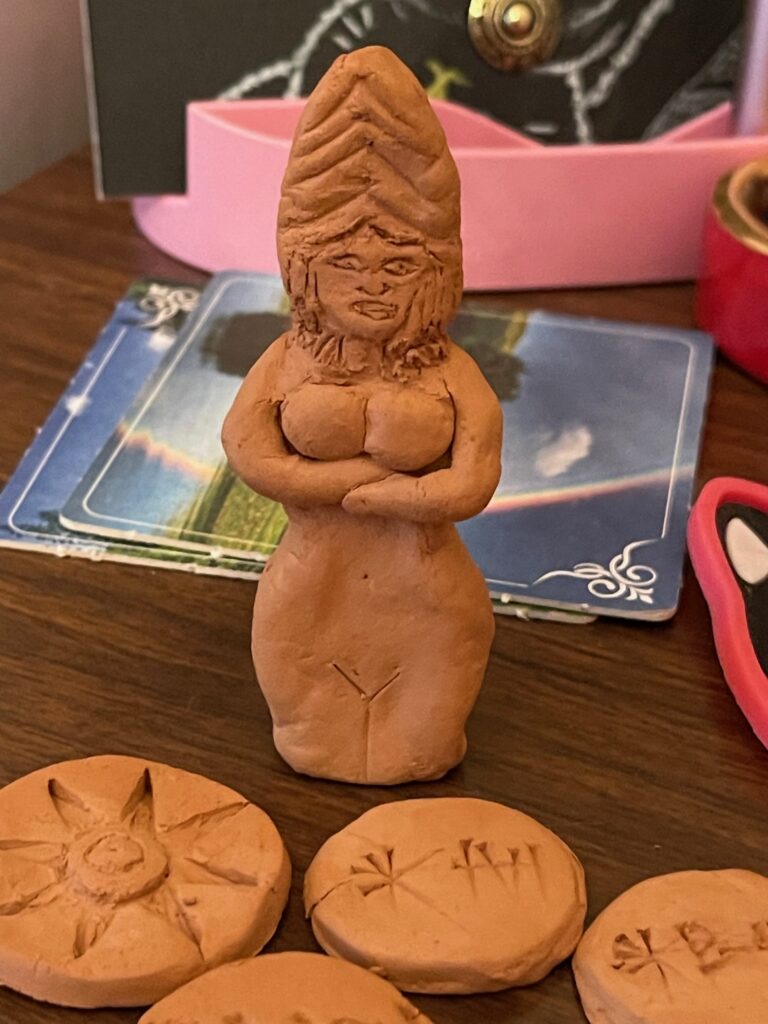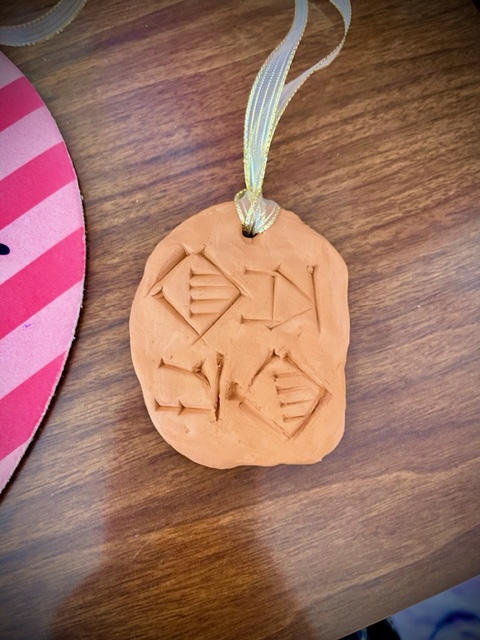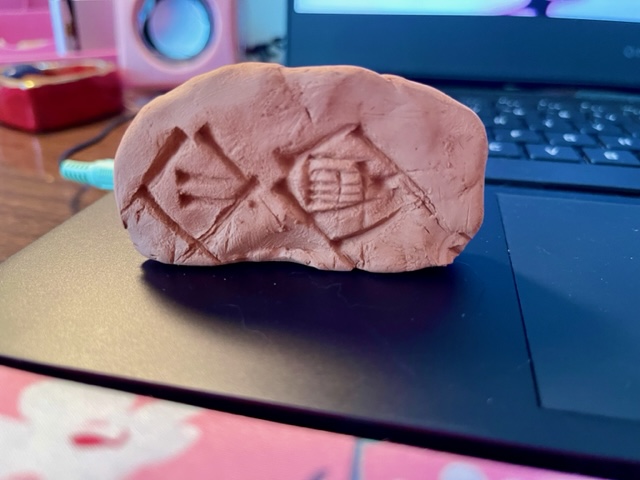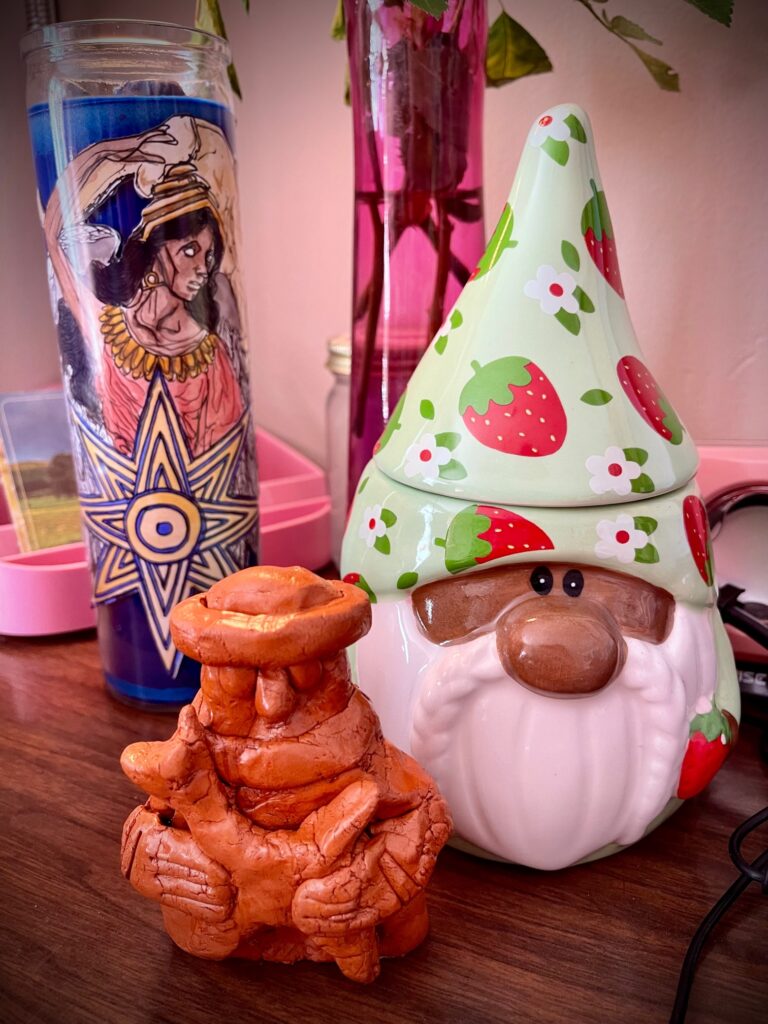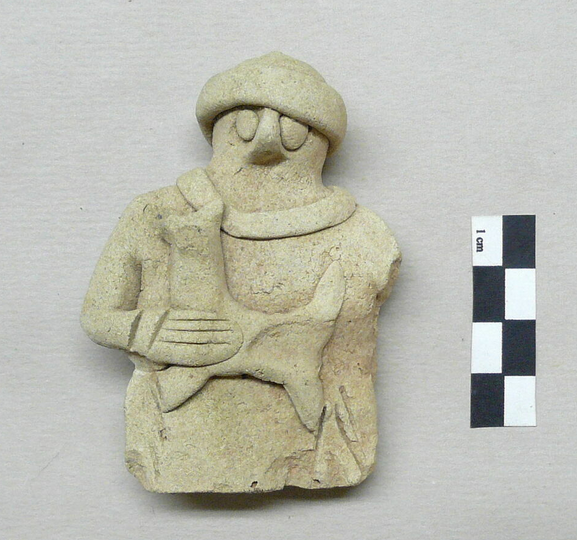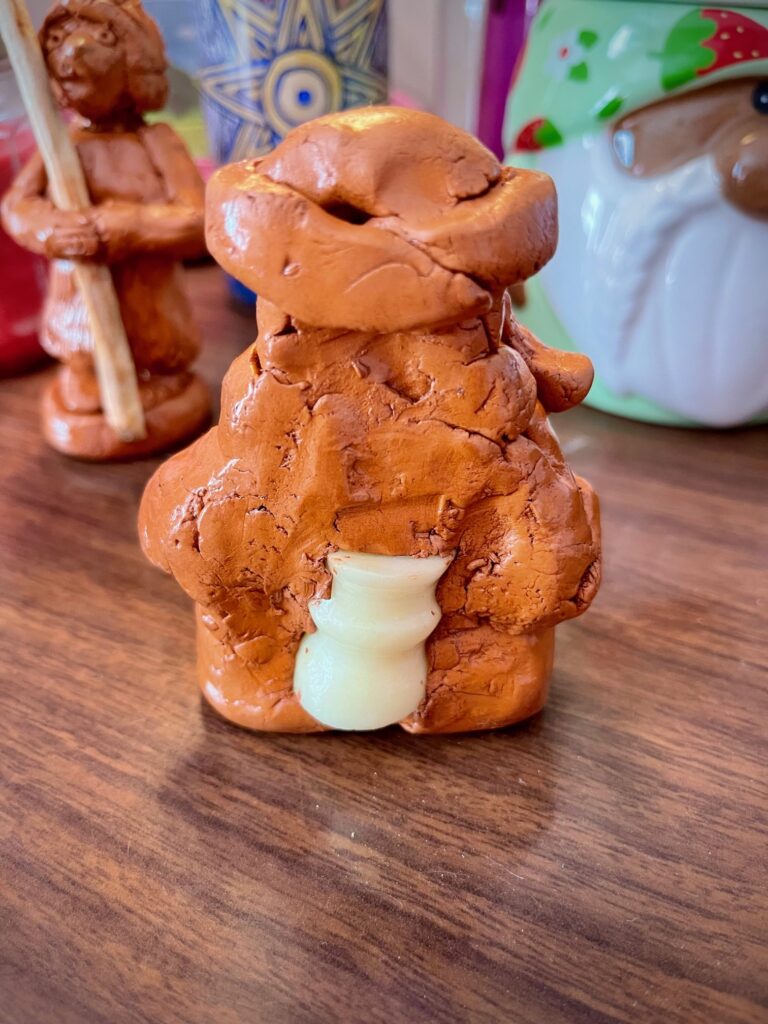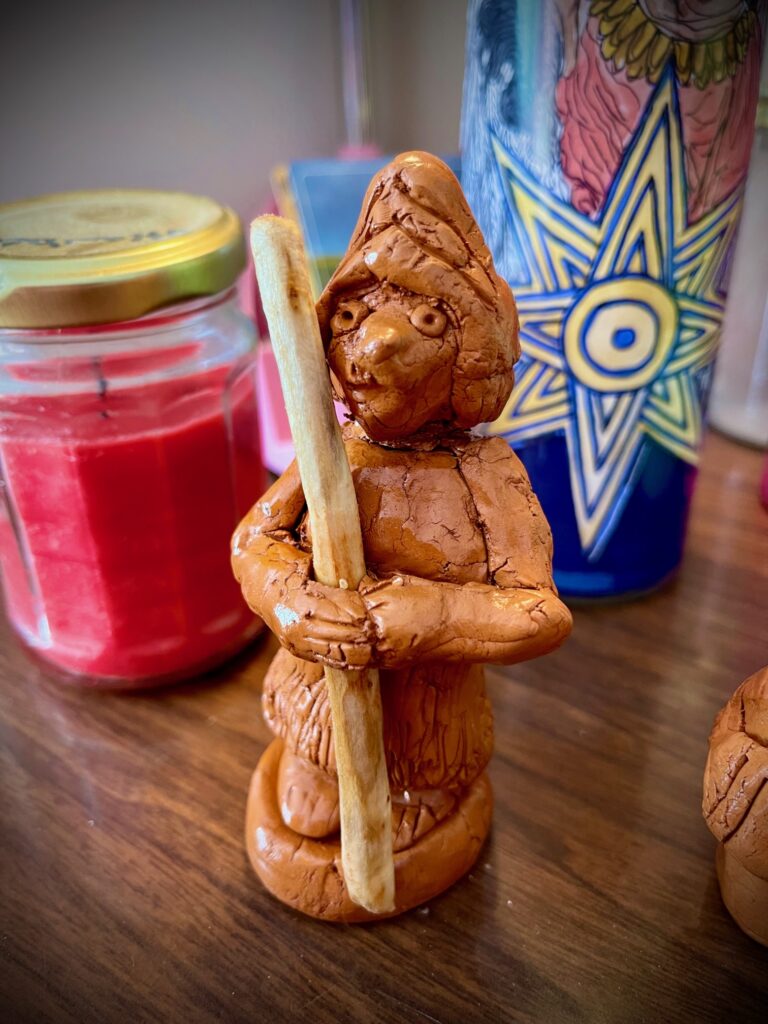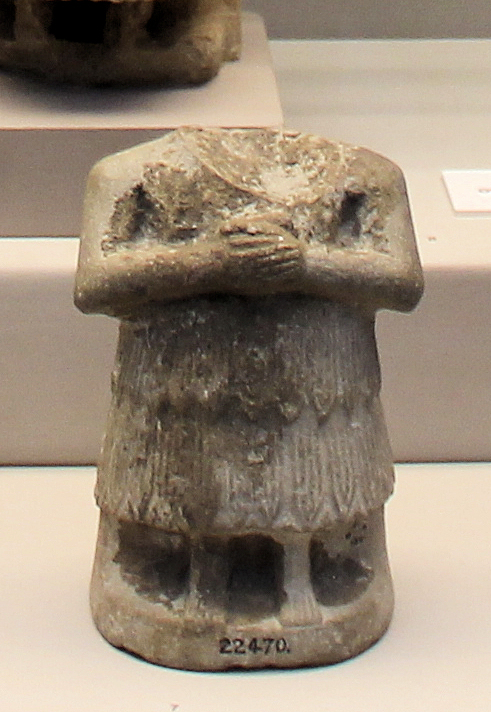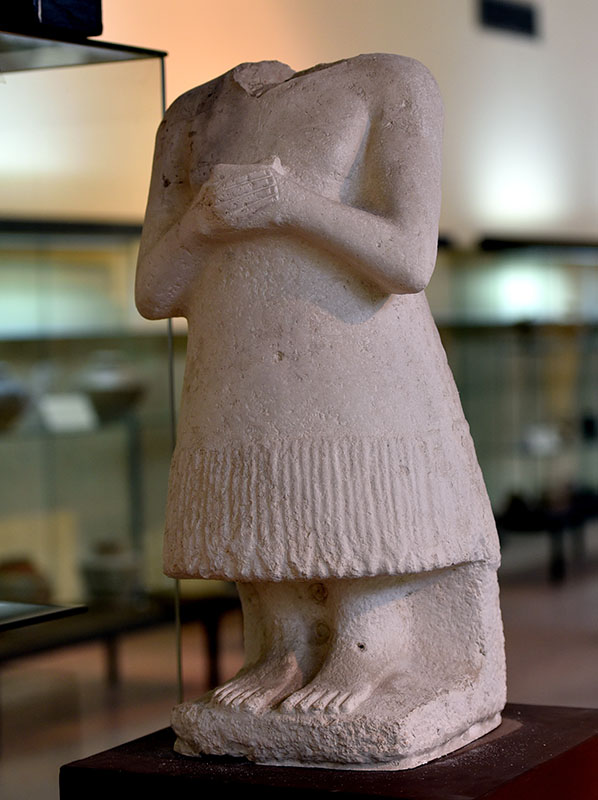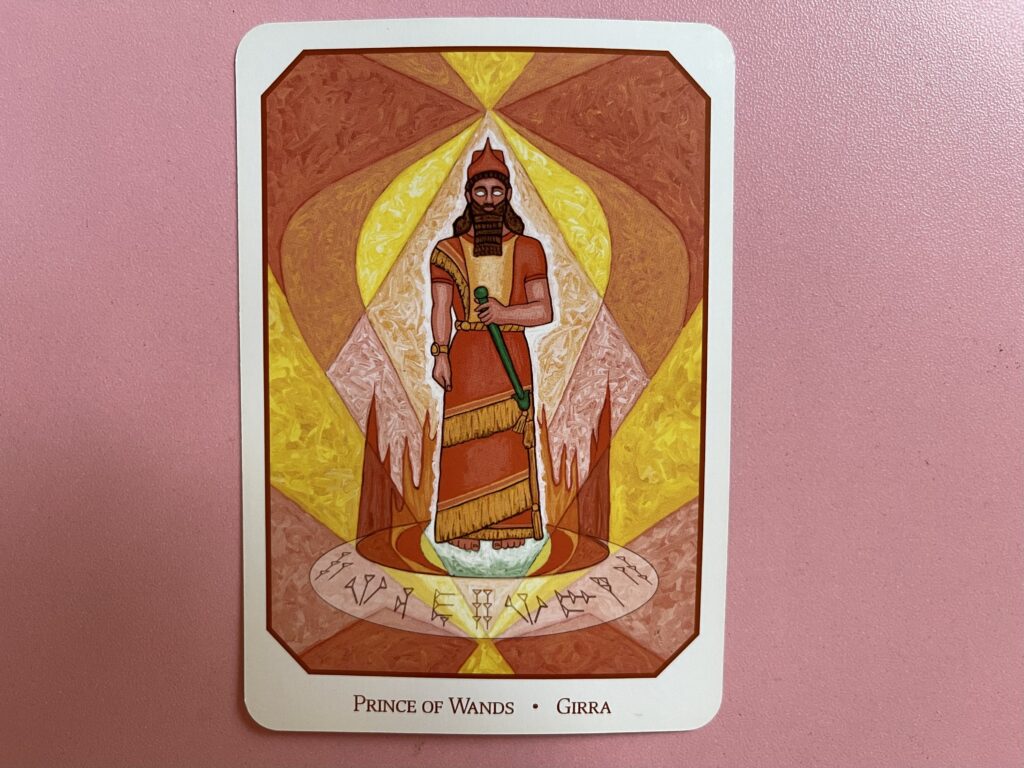I received the samples of my first batch of products from Spreadshop. Some items turned out great, while others… need to be pulled from the shop before I start promoting it. I only bought samples of a handful of the items to review. I still need to order items with my newer designs to test out.
First, the apparel:
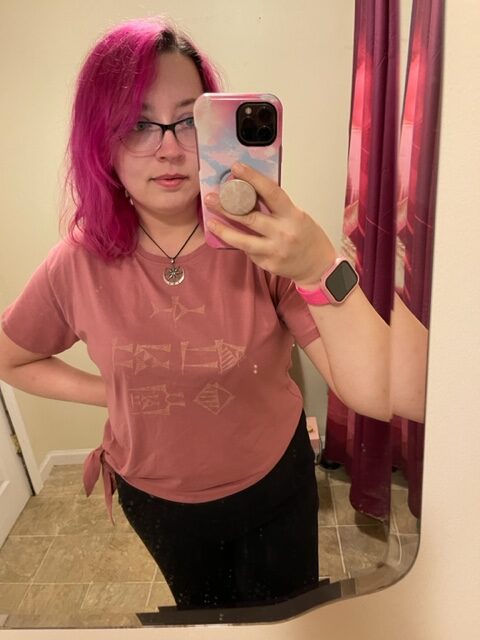
This is the knotted t-shirt in mauve with my til zu-bir ki-aĝ (Live Laugh Love in Sumerian) dseign. In some lighting conditions, the text is a bit difficult to see, but as I wore the shirt throughout the day, I started liking it more and more. In bright light, I think it looked great, so I’m keeping this shirt in the shop with all the color variations.
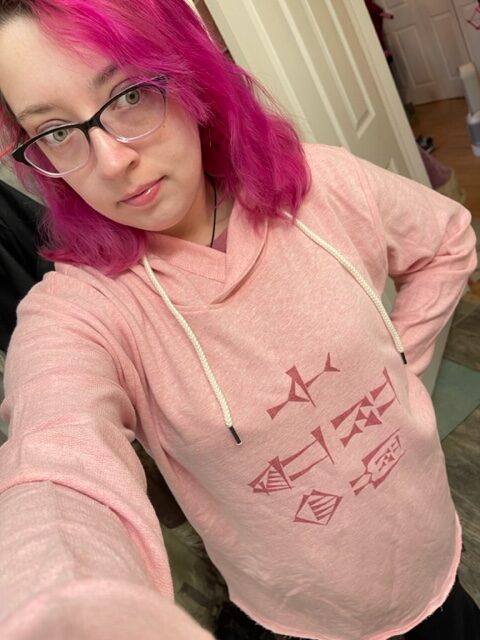
This is the same design on the lightweight terry hoodie. Its a bit big (I forgot unisex sizes are much bigger than normal women’s sizes and got the XL), but I really like the fabric. It does have the “raw” edges, so some people might not like that. I do have normal hoodie styles available too. The design shows up nice on this color too.
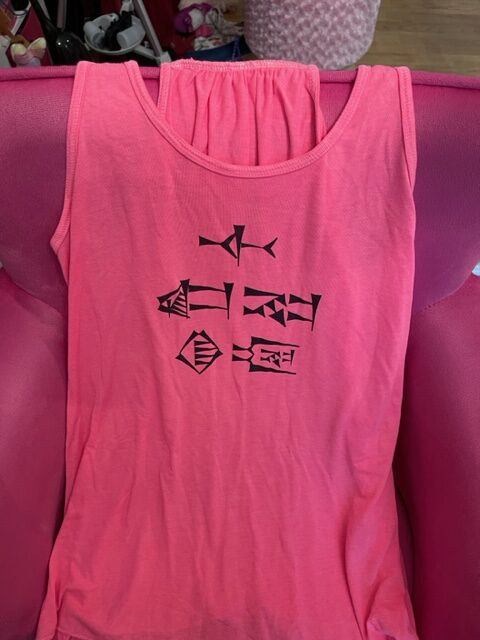
This is the women’s flowy tanktop with the black text version of the Live Laugh Love design. I haven’t worn this shirt yet, but the print looks great! I think I prefer the brownish textured version of the design though, but the flat black version looks great printed on pink fabric!
Accessories/Home items:
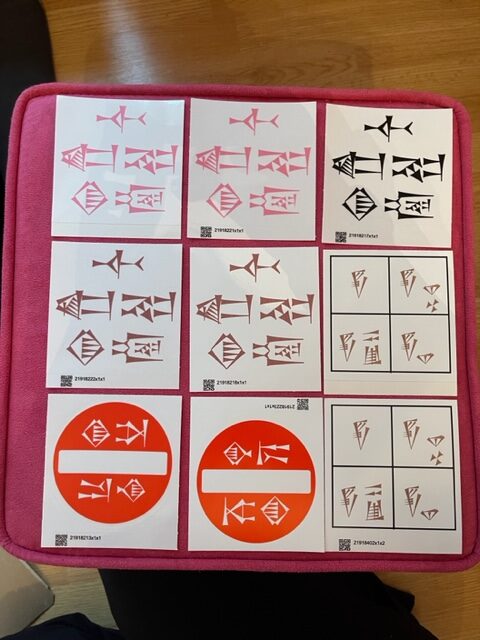
I ordered a variety of stickers in different variations (clear background, matte, glossy). These look pretty nice. Which type to order depends on your preferences and where you want to put the sticker.
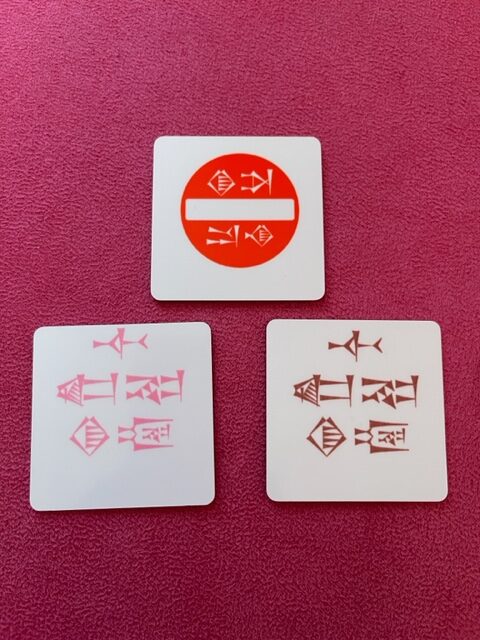
Metal magnets. These were printed off center. The metal itself is nice, but the off centered printing is a deal-breaker. I removed all of these from the shop. Maybe later on in the future I’ll look for a different magnet manufacturer if there is any demand for magnets.
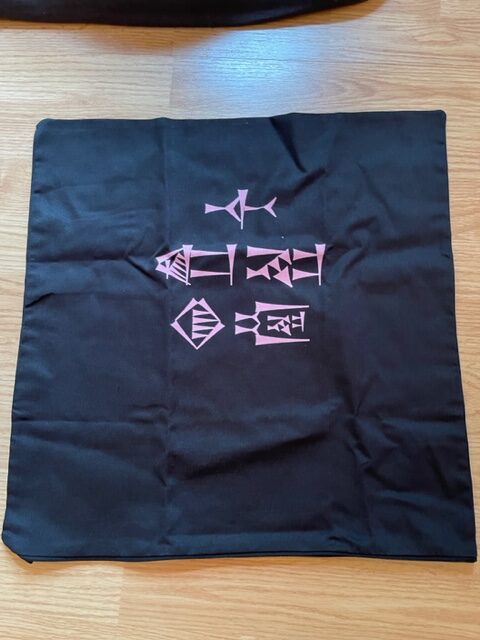
Pillow case. The design was printed much smaller than I had it in the mockup. I also didn’t pay enough attention to the listing to realize it was just a pillow case and not a whole pillow. I feel like other people will probably make that mistake too. Between that and the tiny printing, I’m pulling this item from the shop.
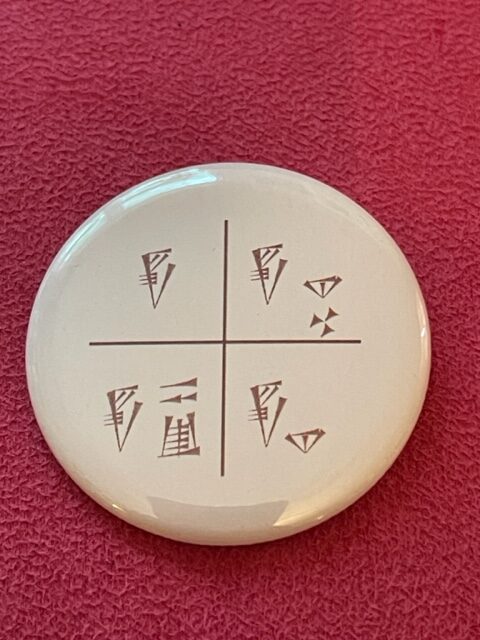
The buttons looks fine. Just as good as the buttons I used to make back in high school until the teacher banned me from playing with the button maker. I should have tested it with a more colorful design though.
I’m about to start promoting this shop, I think. I just have to get all the branding and tax stuff squared away. Its ready for orders, now though.
I am also testing out another print provider, Printful, which seems to be more highly esteemed by artists than Spreadshop/Spreadshirt. Printful doesn’t offer a standalone shop page, but it does integrate with Etsy, Ebay, and a bunch of other eCommerce platforms. I’m thinking of just launching the Etsy shop earlier than I had planned, and offering a few print-on-demand items featuring my digital artwork while I work out the details with my handmade items.
